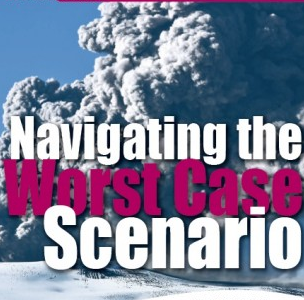
Yesterday Alan Kohler penned a commentary that left more than a few jaws dangling, arguing that:
The rapid fall in the iron ore price in the past few weeks has exposed the core risk to the Australian economy: the currency needs to fall, but the banks still need foreign funding.
The rising terms of trade and/or high Australian interest rates have kept the money flowing in for three decades to cover a persistently negative current account, despite the resources export boom.
Banks are now desperately trying to increase domestic deposits, with some success, but still need to get 40 per cent of their funding from offshore. If that dried up because of a run on the Australian dollar, the Reserve Bank would have to step in and support the banks.
…Australia’s terms of trade may now be in structural decline. If so, the Reserve Bank will soon have a choice: raise interest rates to defend the currency or directly support the banks with a European-style LTRO operation – printing money and supplying liquidity to them.
It’s more likely to be the latter. As the RBA itself has pointed out, defending the currency, either directly by buying it or by raising interest rates, is a mug’s game and usually doesn’t work anyway.
As outlandish as this sounds, the basic thrust of the argument is right. This is the problem that we fundamentally confront. However, I’m not sure that the options Kohler lays out are right. If we do face a structural decline in the terms of trade, and in my view we do, then the cost of offshore bank funding is going to rise. That means interest rates are going to have to fall, bringing down the dollar and creating a larger spread for the banks to maintain profitability. In this sense Kohler is half right about the options, rates can only fall so far, I reckon 2.5% is about the low, so that there is still a positive spread with global bonds to attract capital. That means that the floor price for mortgages is around 5%, nothing like that which is available in other deflating Western nations.
Of course, if things get really bad and the structural decline in the terms of trade is severe then we may well face a current account crisis and capital flight. In that event the dollar could collapse and banks be unable to find sufficient funds. Would we respond by raising interest rates or an LTRO operation? Almost certainly it would be the latter. The facility already exists in the RBA’s ‘cash for coconuts’ repo operations.
Our institutions would still have the market credibility to pull this off. The dollar would still fall heavily but the operation should nurse the banks through while the government nationalises the mortgage insurers and shovels your money into a back door bailout.
We’d come out the other end with utility banks, cheap houses, lower wages, and a radically diminished real exchange rate driving new investment.

